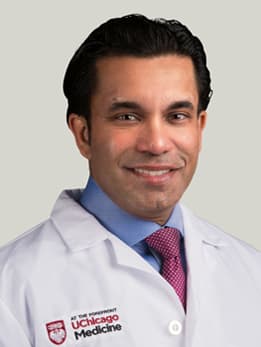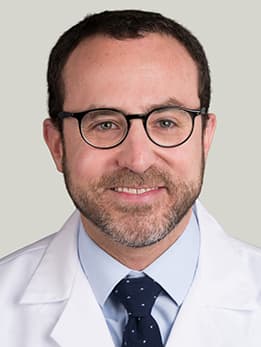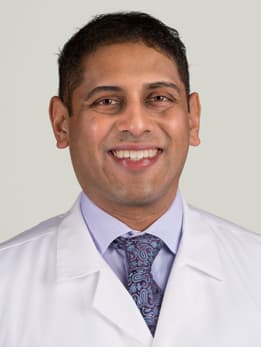What causes chest pain and when to consult a heart doctor

Is the chest pain you're experiencing just indigestion from a spicy meal, or could your body be alerting you to a more serious issue requiring medical attention?
Chest pain – also known as angina – is a key indicator of coronary heart disease, the most common type of heart disease that kills 365,000 people each year.
Here's what you need to know about chest pain, its causes, treatments, and when it indicates a serious coronary artery problem.
What causes chest pain?
Chest pain may be caused by any body structure in the chest – or even abdomen – including superficial structures such as the skin, connective tissue and surface nerves or deep structures and organs such as the heart, lungs and stomach. Other non-cardiac conditions causing chest pain could include shingles, inflammation of the chest wall nerves or cartilage of the ribcage, peptic ulcers or GERD, spasm of the esophagus and, rarely, inflammation of the pancreas or gallbladder. Chest pain may be due to an injury to the chest, a pulled muscle, a lung problem, or acid reflux.
The causes that concern us the most are due to either a blockage in the artery of the heart or a problem with one of the valves of the heart. High blood pressure can also cause chest pain and is a cause for concern. If any of these causes are suspected, patients should see their doctor. Sometimes it's hard to differentiate, but your doctor can help.
How do I know if my chest pain is serious or is due to a heart condition?
Chest pain arising from heart conditions is generally slow to start and slow to resolve, lasting minutes, not seconds. It is often associated with other worrisome symptoms such as shortness of breath, passing out or nearly passing out, nausea, vomiting and profuse sweating. Cardiac chest pain can also radiate to the neck, jaw or inner aspect of the left arm; it rarely changes with position but will worsen with exertion or physical activity.
For more information on heart attacks, along with a useful infographic, visit the American College of Cardiology’s CardioSmart patient info page.
When should someone see a doctor for chest pain?
See a doctor anytime you are worried by your chest pain. We are very aware of the "Hollywood heart attack" where patients have light or heavy chest pain located in the center of their chest and can go down their left arm, signifying a heart attack. But patients can present with a number of symptoms that they may not normally associate with heart disease such as:
- Neck pain
- Jaw pain
- Back pain
- Abdominal pain
- Shortness of breath
Chest pain can be due to a number of causes, but if a patient has developed chest pain, especially while exercising, they should definitely see a doctor.
In general, all chest pains should be evaluated by a physician unless there was a clear and reversible cause for it (mild trauma, cuts, burns, bruises, etc.). It should be noted that early stages of a heart attack are often misinterpreted as gas, indigestion or heartburn and pulmonary embolism (blood clots traveling to the lungs) are often misinterpreted as a variety of lung conditions such as asthma, pneumonia, pleurisy or emphysema.
Chest pain that is persistent or worsening, increasing in intensity or frequency or associated with any of the above symptoms should be urgently evaluated. Chest pain that is unremitting should prompt a call to 9-1-1.
How to stop or prevent chest pain?
"Why do I have chest pain?" is a common question people ask themselves, and being able to answer that can go hand-in-hand with prevention. Future prevention begins with recognizing pain and detailing observations such as:
- When does it come on?
- How long does it last?
- Does it travel to other locations?
- What improves or worsens it?
Write it all down, and patterns will emerge. Once patients create a "symptom log," they can present it to healthcare providers who can make specific suggestions for diagnosis and treatment of the symptoms.
Exercise is also a great way to determine whether chest pain could be arising from the heart or not. If somebody experiences chest pain or pressure with a predictable level of physical activity, such as walking up a flight of stairs, and the pain resolves with rest, it is likely to be due to a narrowing in a coronary artery.
How can chest pain be treated?
If the chest pain is due to a blockage in one of the arteries of the heart, it is usually treated in one of three ways: 1) medication, 2) a stent, or 3) artery bypass surgery. Medications, often our first choice, that lower the blood pressure, lower cholesterol, and relieve the pain from the stenosis can be the mainstay of therapy.
However, if the blockages are severe or if the pain is not relieved with medications, a patient may benefit from a stent, which is a tiny tube of metal mesh that helps ensure adequate blood flow through the artery. In cases where the blockages are quite severe or in locations that cannot be treated with stents, then we are led to the third option, which is coronary artery bypass surgery. In this case, a surgeon will use the patient's own arteries or veins to bypass the blockage.
At the University of Chicago Medicine, we can treat chest pain that is due to narrowed or blocked coronary arteries – and insert coronary stents – with a minimally invasive procedure called a coronary angiogram or a cardiac catheterization. A small catheter, about the size of a spaghetti noodle, is threaded through a large artery in the wrist or groin, and the coronary arteries are seen under X-ray after a small amount of dye is injected.
What technologies are available to patients at UChicago Medicine?
UChicago Medicine specialists offer some of the broadest array of advanced cardiovascular diagnostic tests and treatments available anywhere in the region, ranging from simple medical therapies to the most advanced multi-disciplinary treatments delivered by groups of cardiovascular specialists and surgeons who work using an integrated heart team approach.
We are fully equipped to handle even the most complex cases. This includes opening completely obstructed blood vessels (chronic total occlusions), using tools to remove calcium and plaque from severely diseased vessels (coronary atherectomy), and advanced intracoronary imaging techniques to achieve optimal results for stenting procedures. Our program also uses robotic-assisted surgery to help treat patients in a minimally invasive way.
Coronary Artery Disease and Chest Pain
The University of Chicago Medicine has assembled one of the nation's finest teams of heart experts who specialize in diagnosing and treating all aspects of coronary artery disease. From treatments to alleviate chest pain to rescuing the heart after heart attack, our teams of specialists are always available to offer the finest care.
Read about our diagnostic and treatment options


